Journal Description
Photonics
Photonics
is an international, scientific, peer-reviewed, open access journal on the science and technology of optics and photonics, published monthly online by MDPI.
- Open Access— free for readers, with article processing charges (APC) paid by authors or their institutions.
- High Visibility: indexed within Scopus, SCIE (Web of Science), Inspec, Ei Compendex, CAPlus / SciFinder, and other databases.
- Journal Rank: CiteScore - Q2 (Instrumentation)
- Rapid Publication: manuscripts are peer-reviewed and a first decision is provided to authors approximately 14.8 days after submission; acceptance to publication is undertaken in 1.9 days (median values for papers published in this journal in the first half of 2025).
- Recognition of Reviewers: reviewers who provide timely, thorough peer-review reports receive vouchers entitling them to a discount on the APC of their next publication in any MDPI journal, in appreciation of the work done.
- Companion journal: Lights.
Impact Factor:
1.9 (2024);
5-Year Impact Factor:
2.0 (2024)
Latest Articles
Research on Distributed Temperature and Bending Sensing Measurement Based on DPP-BOTDA
Photonics 2025, 12(11), 1056; https://doi.org/10.3390/photonics12111056 (registering DOI) - 24 Oct 2025
Abstract
Traditional single-mode Brillouin optical time-domain analysis systems are inherently limited in terms of sensing capacity, susceptibility to bending loss, and spatial resolution. Multi-core fibers present a promising approach to overcoming these limitations. In this study, a seven-core fiber was utilized, with the central
[...] Read more.
Traditional single-mode Brillouin optical time-domain analysis systems are inherently limited in terms of sensing capacity, susceptibility to bending loss, and spatial resolution. Multi-core fibers present a promising approach to overcoming these limitations. In this study, a seven-core fiber was utilized, with the central core and three asymmetrically positioned off-axis cores selected for sensing. The temperature coefficients of the four selected cores were experimentally calibrated as 1.103, 0.962, 1.277, and 0.937 MHz/°C, respectively. By employing differential pulse techniques within the Brillouin distributed sensing system, temperature-compensated bending measurements were achieved with a spatial resolution of 20 cm. The fiber was wound around cylindrical mandrels with diameters of 7 cm, 10 cm, and 15 cm. Experimental results demonstrate effective decoupling of temperature and bending strain, enabling accurate curvature reconstruction. Error analysis reveals a minimum deviation of 0.04% for smaller diameters and 0.68% for larger diameters. Cross-comparison of measurements conducted at varying temperatures confirms the robustness and effectiveness of the proposed temperature compensation method.
Full article
Open AccessArticle
Surface Wettability Control Without Knowledge of Surface Topography and Chemistry—A Versatile Approach
by
Alexander Wienke, Shefna Shareef, Jürgen Koch, Peter Jäschke and Stefan Kaierle
Photonics 2025, 12(11), 1055; https://doi.org/10.3390/photonics12111055 (registering DOI) - 24 Oct 2025
Abstract
This paper introduces a versatile approach to achieve specific surface functionality with-out the need for detailed knowledge of surface topography. This is accomplished for applications targeting wettability properties by integrating contact angle measurement into a micromachining setup with a nanosecond pulsed UV laser,
[...] Read more.
This paper introduces a versatile approach to achieve specific surface functionality with-out the need for detailed knowledge of surface topography. This is accomplished for applications targeting wettability properties by integrating contact angle measurement into a micromachining setup with a nanosecond pulsed UV laser, allowing for fully automated programs to find optimal functionalization without requiring knowledge on the topography or on possible laser-induced chemical changes itself. This study investigates the impact of various processing parameters, including laser pulse energy, scanning speed, hatching distance, jump speed, and laser repetition rate, on the wetting properties of two widely used polymers: polyethylene (PE) and ethylene propylene diene monomer (EPDM). A design of experiment (DOE) approach is used for experimental design and subsequent modeling. Finally, the effectiveness of this new approach is evaluated and compared with conventional methods.
Full article
(This article belongs to the Special Issue Laser Surface Processing: From Fundamentals to Applications)
Open AccessArticle
Solitons in a One-Dimensional Rhombic Waveguide Array
by
Dmitry V. Shaykin and Nikita V. Bykov
Photonics 2025, 12(11), 1054; https://doi.org/10.3390/photonics12111054 (registering DOI) - 24 Oct 2025
Abstract
We present an analytical and numerical study of nonlinear wave localization in a one-dimensional rhombic (diamond) waveguide array that combines forward- and backward-propagating channels. This mixed-index configuration, realizable through Bragg-type couplers or corrugated waveguides, produces a tunable spectral gap and supports nonlinear self-localized
[...] Read more.
We present an analytical and numerical study of nonlinear wave localization in a one-dimensional rhombic (diamond) waveguide array that combines forward- and backward-propagating channels. This mixed-index configuration, realizable through Bragg-type couplers or corrugated waveguides, produces a tunable spectral gap and supports nonlinear self-localized states in both transmission and forbidden-band regimes. Starting from the full set of coupled-mode equations, we derive the effective evolution model, identify the role of coupling asymmetry and nonlinear coefficients, and obtain explicit soliton solutions using the method of multiple scales. The resulting envelopes satisfy a nonlinear Schrödinger equation with an effective nonlinear parameter
(This article belongs to the Section Lasers, Light Sources and Sensors)
►▼
Show Figures
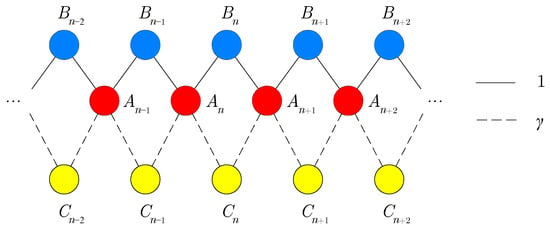
Figure 1
Open AccessArticle
Novel High-Contrast Photoacoustic Imaging Method for Cancer Cell Monitoring Based on Dual-Wavelength Confocal Metalenses
by
Zixue Chen, Ruihao Zhang, Hongbin Zhang, Bingqiang Zhang, Lei Qin, Jiansen Du, Tao Zhao and Bin Wang
Photonics 2025, 12(11), 1053; https://doi.org/10.3390/photonics12111053 (registering DOI) - 24 Oct 2025
Abstract
This study proposes a high-contrast photoacoustic (PA) imaging methodology based on a dual-wavelength confocal metalens, designed to monitor the dissemination of cancer cells and to inform subsequent cancer treatment strategies. The metalens is composed of two metasurfaces that perform filtering and focusing functions,
[...] Read more.
This study proposes a high-contrast photoacoustic (PA) imaging methodology based on a dual-wavelength confocal metalens, designed to monitor the dissemination of cancer cells and to inform subsequent cancer treatment strategies. The metalens is composed of two metasurfaces that perform filtering and focusing functions, effectively reducing the cross-talk between the two wavelengths of light in space and achieving a confocal effect. Furthermore, to minimize process complexity, a uniform material system of silicon dioxide (SiO2) and titanium dioxide (TiO2) is employed across the different metasurfaces of the metalens. The designed metalens has a radius of 25 µm and an operational focal length of 98.5 µm. The results confirm that this dual-metasurface design achieves high focusing efficiency alongside precise focusing capability, with the deviations of the actual focal lengths for both beams from the design values being within 1.5 µm. Additionally, this study developed a skin tissue model and simulated multi-wavelength photoacoustic imaging of cancer cells within the human body by integrating theories of radiative transfer, photothermal conversion, and the wave equation. The results demonstrate that the enhancement trend of the reconstructed signal closely matches the original signal, confirming the model’s excellent fitting performance. The sound pressure values generated by cancer cells are significantly higher than those of normal cells, proving that this method can effectively distinguish cancerous tissue from healthy tissue. This research provides new theoretical support and methodological foundations for the clinical application of multi-wavelength photoacoustic imaging technology.
Full article
(This article belongs to the Special Issue The Principle and Application of Photonic Metasurfaces)
►▼
Show Figures
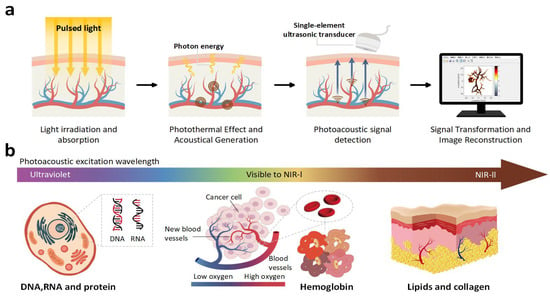
Figure 1
Open AccessArticle
A Unified OFDM-ISAC Signal Generation Architecture in W-Band via Photonics-Aided Frequency Multiplication and Phase Noise Mitigation
by
Ketong Deng, Jiaxuan Liu, Xin Lu, Jiali Chen, Ye Zhou and Weiping Li
Photonics 2025, 12(11), 1052; https://doi.org/10.3390/photonics12111052 (registering DOI) - 24 Oct 2025
Abstract
►▼
Show Figures
This work proposes a photonics-aided W-band integrated sensing and communication (ISAC) system using photonics-aided frequency multiplication to suppress phase noise. Conventional dual-laser architectures suffer from phase noise accumulation, degrading both communication reliability and sensing resolution. To address this, we integrate photonics-aided frequency multiplication
[...] Read more.
This work proposes a photonics-aided W-band integrated sensing and communication (ISAC) system using photonics-aided frequency multiplication to suppress phase noise. Conventional dual-laser architectures suffer from phase noise accumulation, degrading both communication reliability and sensing resolution. To address this, we integrate photonics-aided frequency multiplication with orthogonal frequency-division multiplexing (OFDM), enabling a unified signal structure that simultaneously encodes communication data and radar waveforms without redundant resource allocation. Theoretical analysis reveals phase noise cancellation through coherent beating of symmetrically filtered sidebands in the photodetector (PD). Results demonstrate concurrent delivery of probability shaping (PS)-256QAM OFDM signals with a symbol error rate below 4.2 × 10−2 and radar sensing with a 13.6 dB peak-to-sidelobe ratio (PSLR). Under a 1 MHz laser linewidth, the system achieves a 3.2 dB PSLR improvement over conventional methods, validating its potential for high-performance ISAC in beyond-5G networks.
Full article

Figure 1
Open AccessArticle
Trillion-Frame-Rate All-Optical Sectioning Three-Dimensional Holographic Imaging
by
Yubin Zhang, Qingzhi Li, Wanguo Zheng and Zeren Li
Photonics 2025, 12(11), 1051; https://doi.org/10.3390/photonics12111051 (registering DOI) - 24 Oct 2025
Abstract
Three-dimensional holographic imaging technology is increasingly applied in biomedical detection, materials science, and industrial non-destructive testing. Achieving high-resolution, large-field-of-view, and high-speed three-dimensional imaging has become a significant challenge. This paper proposes and implements a three-dimensional holographic imaging method based on trillion-frame-frequency all-optical multiplexing.
[...] Read more.
Three-dimensional holographic imaging technology is increasingly applied in biomedical detection, materials science, and industrial non-destructive testing. Achieving high-resolution, large-field-of-view, and high-speed three-dimensional imaging has become a significant challenge. This paper proposes and implements a three-dimensional holographic imaging method based on trillion-frame-frequency all-optical multiplexing. This approach combines spatial and temporal multiplexing to achieve multi-channel partitioned acquisition of the light field via a two-dimensional diffraction grating, significantly enhancing the system’s imaging efficiency and dynamic range. The paper systematically derives the theoretical foundation of holographic imaging, establishes a numerical reconstruction model based on angular spectrum propagation, and introduces iterative phase recovery and image post-processing strategies to optimize reproduction quality. Experiments using standard resolution plates and static particle fields validate the proposed method’s imaging performance under static conditions. Results demonstrate high-fidelity reconstruction approaching diffraction limits, with post-processing further enhancing image sharpness and signal-to-noise ratio. This research establishes theoretical and experimental foundations for subsequent dynamic holographic imaging and observation of large-scale complex targets.
Full article
(This article belongs to the Special Issue Thermal Radiation and Micro-/Nanophotonics)
►▼
Show Figures

Figure 1
Open AccessArticle
On the Possibility of Analyzing Dynamic Light Scattering Time Series Using the Co-Occurrence Matrix and Artificial Neural Networks
by
Dan Chicea
Photonics 2025, 12(11), 1050; https://doi.org/10.3390/photonics12111050 (registering DOI) - 24 Oct 2025
Abstract
A Dynamic Light Scattering time series can be analyzed using several well-established procedures. An alternative is to compute a co-occurrence matrix of the time series and to establish a correlation between the moments of the intensity level distribution and the physical properties of
[...] Read more.
A Dynamic Light Scattering time series can be analyzed using several well-established procedures. An alternative is to compute a co-occurrence matrix of the time series and to establish a correlation between the moments of the intensity level distribution and the physical properties of the particles in suspension using an Artificial Neural Network. We performed a comprehensive error analysis of the proposed method for estimating particle diameter from the simulated Dynamic Light Scattering (DLS) time series, both on simulated and on experimental data. The results demonstrate the potential of utilizing moments of the co-occurrence matrix as an alternative approach for processing DLS time series data to assess the size of suspended particles.
Full article
(This article belongs to the Special Issue Design and Construction of Optical Systems)
►▼
Show Figures
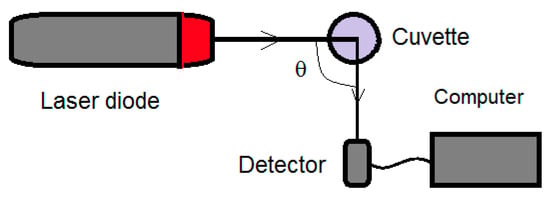
Figure 1
Open AccessArticle
Inverse-Designed Narrow-Band and Flat-Top Bragg Grating Filter
by
Yu Chen, An He, Junjie Yao, Meilin Zhong, Zhihao Li, Leyuan Zhang, Wei Cao, Xu Sun, Gangxiang Shen and Ning Liu
Photonics 2025, 12(11), 1049; https://doi.org/10.3390/photonics12111049 - 23 Oct 2025
Abstract
Integrated optical filters are fundamental and indispensable components of silicon photonics, which enhance the data throughput of high-demand communication networks. Grating-assisted filters have been widely used due to the merits they offer: flat top, low crosstalk, and no FSR. In this paper, we
[...] Read more.
Integrated optical filters are fundamental and indispensable components of silicon photonics, which enhance the data throughput of high-demand communication networks. Grating-assisted filters have been widely used due to the merits they offer: flat top, low crosstalk, and no FSR. In this paper, we report an inverse-designed narrow-band silicon Bragg grating filter that unites lateral-misalignment apodization with cooperative particle swarm optimization (CPSO). The initial coupling-coefficient profile of the filter is first yielded by a layer-peeling algorithm (LPA). Subsequently, the final structure is designed by CPSO to approach the desired spectral response. The filter is fabricated on a 220 nm silicon-on-insulator platform. The measured results exhibit 3.39 nm bandwidth, 19.34 dB side lobe suppression ratio (SLSR), and 1.75 dB insertion loss. The proposed design method effectively solves the problem of excessively high side lobes in uniform gratings and LPA-designed gratings when designing narrow-bandwidth filters.
Full article
(This article belongs to the Special Issue Silicon Photonics: From Fundamentals to Future Directions)
Open AccessArticle
Extending the ICESAT-2 ATLAS Lidar Capabilities to Other Planets Within Our Solar System
by
John J. Degnan
Photonics 2025, 12(11), 1048; https://doi.org/10.3390/photonics12111048 - 23 Oct 2025
Abstract
The ATLAS lidar on NASA’s Earth-orbiting ICESat-2 satellite has operated continuously since its launch in September 2018, with no sign of degradation. Compared to previous international single-beam spaceborne lidars, which operated at a few tens of Hz, the single-photon-sensitive, six-beam ATLAS pushbroom lidar
[...] Read more.
The ATLAS lidar on NASA’s Earth-orbiting ICESat-2 satellite has operated continuously since its launch in September 2018, with no sign of degradation. Compared to previous international single-beam spaceborne lidars, which operated at a few tens of Hz, the single-photon-sensitive, six-beam ATLAS pushbroom lidar provides 60,000 surface measurements per second and has accumulated almost 3 trillion surface measurements during its six years of operation. It also features a 0.5 m2 telescope aperture and a single, 5 Watt, frequency-doubled Nd:YAG laser generating a 10 KHz train of 1.5-nanosecond pulses at a green wavelength of 532 nm. The current paper investigates how, with minor modifications to the ATLAS lidar, this capability might be extended to other planets within our solar system. Crucial to this capability is the need to minimize the solar background seen by the lidar while simultaneously providing, for long time intervals (multiple months), an uninterrupted, modestly powered, multimegabit per second interplanetary laser communications link to a terminal in Earth orbit. The proposed solution is a pair of Earth and planetary satellites in high, parallel, quasi-synchronized orbits perpendicular to their host planet’s orbital planes about the Sun. High orbits significantly reduce the time intervals over which the interplanetary communications link is blocked by their host planets. Initial establishment of the interplanetary communications link is simplified during two specific time intervals per orbit when the sunlit image of the two planets are not displaced from their actual positions (“zero point ahead angle”). In this instance, sunlit planetary images and the orbiting satellite laser beacon can be displayed on the same pixelated detector array, thereby accelerating the coalignment of the two communication terminals. Various tables in the text provide insight for each of the eight planets regarding the impact of solar distance on the worst-case Signal-to-Noise Ratio (SNR), the effect of satellite orbital height on the duration of the unblocked interplanetary communications link, and the resulting planetary surface continuity and resolution in both the along-track and cross-track directions. For planets beyond Saturn, the laser power and/or transmit/receive telescope apertures required to transmit multimegabit-per-second lidar data back to Earth are major challenges given current technology.
Full article
(This article belongs to the Special Issue Advances in Solid-State Laser Technology and Applications)
►▼
Show Figures
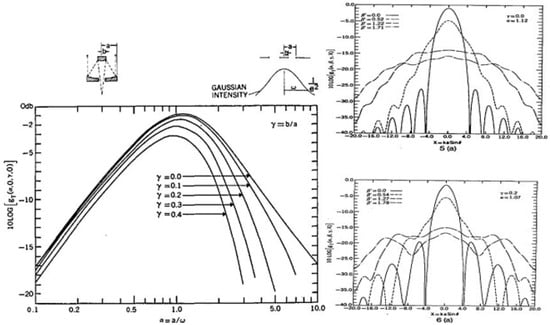
Figure 1
Open AccessArticle
Cascaded MZI and FPI Sensor for Simultaneous Measurement of Air Pressure and Temperature Using Capillary Fiber and Dual-Core Fiber
by
Tongtong Zhu, Xintong Zhong, Xinhao Guo, Qipeng Huang, Xiaoyong Chen, Chuanxin Teng, Peng-Cheng Li, Xuehao Hu and Hang Qu
Photonics 2025, 12(11), 1047; https://doi.org/10.3390/photonics12111047 - 23 Oct 2025
Abstract
In this paper, we propose and experimentally demonstrate a dual-parameter fiber optic sensor, which combines a Fabry–Perot interferometer (FPI) and a Mach–Zehnder interferometer (MZI) for simultaneous pressure and temperature sensing. The Fabry–Perot (FP) cavity is formed by sandwiching a capillary fiber between a
[...] Read more.
In this paper, we propose and experimentally demonstrate a dual-parameter fiber optic sensor, which combines a Fabry–Perot interferometer (FPI) and a Mach–Zehnder interferometer (MZI) for simultaneous pressure and temperature sensing. The Fabry–Perot (FP) cavity is formed by sandwiching a capillary fiber between a single-mode fiber and a dual-core fiber (DCF). A fluid channel is very close to the central core of the DCF. By precisely drilling micro-air chambers in the annular cladding of a capillary fiber (CF) using a femtosecond laser, external air pressure can directly affect the capillary fiber and induce changes in the refractive index of the air in the CF. The F-P cavity achieves a pressure sensitivity of 3.67 nm/MPa with a temperature cross-sensitivity of 2.82 pm/°C. The MZI is constructed using a dual-core fiber filled with silicone oil in the fluidic channel, which enhances temperature sensitivity through the thermo-optic effect. The MZI sensor exhibits a nonlinear temperature response with an average sensitivity of 103.43 pm/°C. The corresponding pressure cross-sensitivity is about –0.11 nm/MPa. Due to very low cross-sensitivity, simultaneous measurement of temperature and gas pressure is feasible. In addition, we implement a variant by replacing silicone oil with a UV-curable adhesive, which delivers a comparable FP-based pressure sensitivity of ~3.93 nm/MPa while yielding an MZI-based temperature sensitivity of 71.7 pm/°C and potentially improved long-term stability.
Full article
(This article belongs to the Special Issue Advances in Optical Fiber Sensing Technology)
►▼
Show Figures
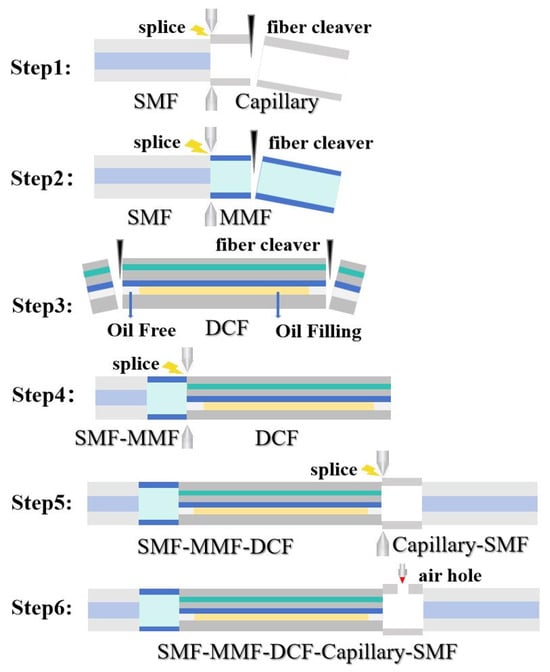
Figure 1
Open AccessReview
A Review of Sub-Wavelength Wire Grid Polarizers and Their Development Trends
by
Bing Chen, Xiuhua Fu, Xianzhu Liu, Yonggang Pan, Suotao Dong, Ben Wang, Zhaowen Lin and Huilin Jiang
Photonics 2025, 12(11), 1046; https://doi.org/10.3390/photonics12111046 - 23 Oct 2025
Abstract
There has been a significant rise in the fabrication of polarizing elements with the rapid advancement of polarization imaging technology, coinciding with a rise in research on such elements. This article provides a comprehensive review of sub-wavelength wire grid polarizers which can be
[...] Read more.
There has been a significant rise in the fabrication of polarizing elements with the rapid advancement of polarization imaging technology, coinciding with a rise in research on such elements. This article provides a comprehensive review of sub-wavelength wire grid polarizers which can be applied in different operating wavelength ranges, specifically focusing on their design, as well as their related fabrication processes and metrology methods. First, structural parameters, designed and simulated via the finite-difference time-domain (FDTD) method or rigorous coupled wave analysis (RCWA), and their impact on wire grid performance are investigated based on the effective medium theory. Second, a comprehensive overview of domestic and international studies is provided, focusing on the developments in sub-wavelength wire grid polarizers with single-layer structures and bilayer structures at different operating wavelength bands—deep ultraviolet, visible, middle- and far-infrared, and terahertz wavelength bands. Research related to polarizers with multilayer structures, simulated and carried out via the use of specific software, is also presented. Finally, the progress regarding sub-wavelength wire grid polarizer research is summarized, and future prospects are forecasted, with emphasis on material selection, wire grid structure optimization, and innovation in manufacturing processes.
Full article
(This article belongs to the Section Optoelectronics and Optical Materials)
►▼
Show Figures
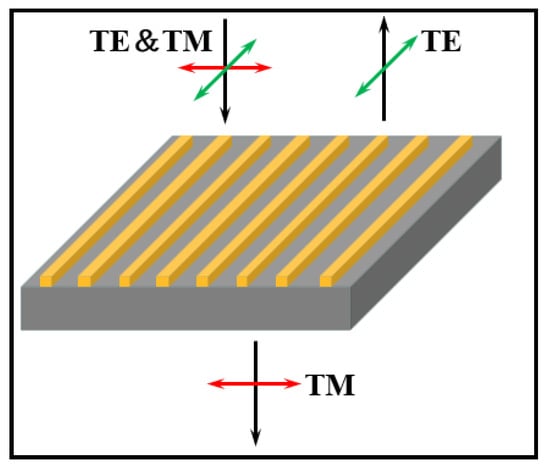
Figure 1
Open AccessArticle
A Wavelength-Multiplexed Dual-Frequency Mode-Locked Fiber Laser with Tunable Repetition Frequency Difference
by
Lilin Luo, Qianyu Yao and Xinhai Zhang
Photonics 2025, 12(11), 1045; https://doi.org/10.3390/photonics12111045 - 22 Oct 2025
Abstract
We present a wavelength-multiplexed dual-frequency mode-locked fiber laser capable of generating asynchronous dual-frequency pulses with a widely tunable repetition frequency difference. The laser achieves the center wavelength separation adjustable from 1.02 to 26.7 nm, while the repetition frequency difference can be tuned from
[...] Read more.
We present a wavelength-multiplexed dual-frequency mode-locked fiber laser capable of generating asynchronous dual-frequency pulses with a widely tunable repetition frequency difference. The laser achieves the center wavelength separation adjustable from 1.02 to 26.7 nm, while the repetition frequency difference can be tuned from 147 Hz to ~3 kHz. Such wide tunability is realized within a compact cavity by leveraging the low-threshold saturable absorption of carbon nanotubes (CNTs) and the wavelength selectivity introduced by nonlinear polarization rotation (NPR). The tunability of repetition frequency difference not only broadens the scope of wavelength-multiplexed asynchronous mode-locking but also provides a versatile and practical dual-frequency source.
Full article
(This article belongs to the Special Issue Nonlinear Optics and Hyperspectral Polarization Imaging)
►▼
Show Figures
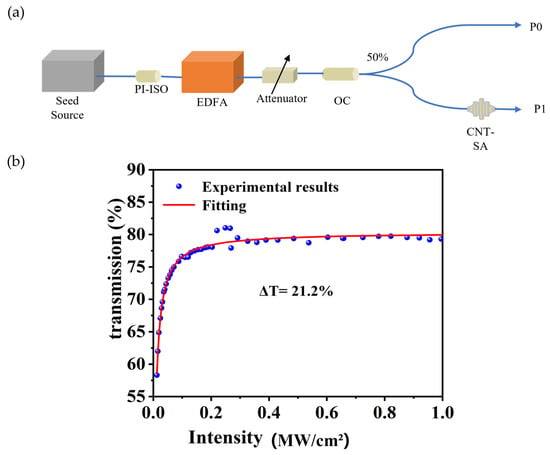
Figure 1
Open AccessArticle
EISD-YOLO: Efficient Infrared Ship Detection with Param-Reduced PEMA Block and Dynamic Task Alignment
by
Siyu Wang, Yunsong Feng, Huifeng Tao, Juan Chen, Wei Jin, Liping Liu and Changqi Zhou
Photonics 2025, 12(11), 1044; https://doi.org/10.3390/photonics12111044 - 22 Oct 2025
Abstract
Ship detection is critical for maritime traffic management, as infrared imaging in complex marine environments encounters significant challenges, such as strong background interference and weak target features. Thus, we propose EISD-YOLO (Efficient Infrared Ship Detection-YOLO), a high-performance lightweight algorithm specifically designed for infrared
[...] Read more.
Ship detection is critical for maritime traffic management, as infrared imaging in complex marine environments encounters significant challenges, such as strong background interference and weak target features. Thus, we propose EISD-YOLO (Efficient Infrared Ship Detection-YOLO), a high-performance lightweight algorithm specifically designed for infrared ship detection. The algorithm aims to improve detection accuracy while simultaneously reducing model parameters and enhancing computational efficiency. It integrates three core architectural innovations: first, we optimized the backbone C3k2 module by replacing the traditional bottleneck with a PEMA block to significantly reduce the parameter count; second, we integrated a lightweight DS_ADNet module, using depth-wise separable convolution to reduce parameters and alleviate computational load while maintaining robust feature representation; and third, we adopted the DyTAHead detection head, which integrates classification and localization features through dynamic task alignment, thereby achieving robust performance in complex infrared ship detection scenarios. The experimental results on the IRShip dataset demonstrate that, compared with YOLOv11n, EISD-YOLO reduced the parameters by 48.83%, while mAP@0.50, precision, and recall all increased by 1.2%. This breaks the traditional rule that lightweight models inevitably lead to reduced accuracy. Additionally, the model size reduced from 10.1 MB to 5.7 MB, which highlights its enhanced computational efficiency and practical applicability in maritime deployment scenarios.
Full article
(This article belongs to the Special Issue Technologies and Applications of Optical Imaging)
►▼
Show Figures
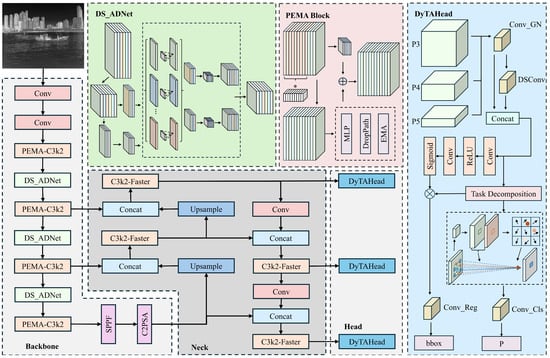
Figure 1
Open AccessReview
Retinal Laser Therapy Mechanisms, Innovations, and Clinical Applications
by
Xinyi Xie, Luqman Munir and Yannis Mantas Paulus
Photonics 2025, 12(11), 1043; https://doi.org/10.3390/photonics12111043 - 22 Oct 2025
Abstract
Retinal laser therapy has been a mainstay for treating proliferative diabetic retinopathy, retinal vascular disease, and retinal breaks since 1961. However, conventional millisecond photocoagulation can cause permanent scarring and procedure discomfort, motivating the development of damage-sparing approaches that preserve the neurosensory retina. Clinically,
[...] Read more.
Retinal laser therapy has been a mainstay for treating proliferative diabetic retinopathy, retinal vascular disease, and retinal breaks since 1961. However, conventional millisecond photocoagulation can cause permanent scarring and procedure discomfort, motivating the development of damage-sparing approaches that preserve the neurosensory retina. Clinically, panretinal photocoagulation remains effective for proliferative disease but trades off peripheral visual field and night vision. This review synthesizes development, mechanisms, and clinical evidence for laser modalities, including short-pulse selective retinal therapy (SRT), subthreshold diode micropulse (SDM), and pattern-scanning photocoagulation. We conducted a targeted narrative search of PubMed/MEDLINE, Embase, Web of Science, and trial registries (1960–September 2025), supplemented by reference list screening. We prioritized randomized/prospective studies, large cohorts, systematic reviews, mechanistic modeling, and relevant preclinical work. Pulse duration is the primary determinant of laser–tissue interaction. In the microsecond regime, SRT yields retinal pigment epithelium (RPE)-selective photodisruption via microcavitation and uses real-time optoacoustic or OCT feedback. SDM 100–300 µs delivers nondamaging thermal stress with low duty cycles and titration-based dosing. Pattern-scanning platforms improve throughput and tolerance yet remain destructive photocoagulation. Feedback-controlled SRT shows anatomic/functional benefit in chronic central serous chorioretinopathy and feasibility in diabetic macular edema. SDM can match threshold macular laser for selected DME and may reduce anti-VEGF injection burden. Sub-nanosecond “rejuvenation” lasers show no overall benefit in intermediate AMD and may be harmful in specific phenotypes. Advances in delivery, dosimetry, and closed-loop feedback aim to minimize collateral damage while retaining therapeutic effect. Key gaps include head-to-head trials (SRT vs. PDT/SDM), standardized feedback thresholds across pigmentation and devices, and long-term macular safety to guide broader clinical adoption.
Full article
(This article belongs to the Special Issue Novel Techniques and Applications of Ophthalmic Optics)
►▼
Show Figures

Figure 1
Open AccessArticle
Experimental Demonstration of High-Security and Low-CSPR Single-Sideband Transmission System Based on 3D Lorenz Chaotic Encryption
by
Chao Yu, Angli Zhu, Hanqing Yu, Yuanfeng Li, Mu Yang, Peijin Hu, Haoran Zhang, Xuan Chen, Hao Qi, Deqian Wang, Yiang Qin, Xiangning Zhong, Dong Zhao and Yue Liu
Photonics 2025, 12(11), 1042; https://doi.org/10.3390/photonics12111042 - 22 Oct 2025
Abstract
Broadcast-style downlinks (e.g., PONs and satellites) expose physical waveforms despite transport-layer cryptography, motivating physical-layer encryption (PLE). Digital chaotic encryption is appealing for its noise-like spectra, sensitivity, and DSP-friendly implementation, but in low-CSPR KK-SSB systems, common embeddings disrupt minimum-phase requirements and raise PAPR/SSBI near
[...] Read more.
Broadcast-style downlinks (e.g., PONs and satellites) expose physical waveforms despite transport-layer cryptography, motivating physical-layer encryption (PLE). Digital chaotic encryption is appealing for its noise-like spectra, sensitivity, and DSP-friendly implementation, but in low-CSPR KK-SSB systems, common embeddings disrupt minimum-phase requirements and raise PAPR/SSBI near 1 dB CSPR, while finite-precision effects can leak correlation after KK reconstruction. We bridge this gap by integrating 3D Lorenz-based PLE into our low-CSPR KK-SSB receiver. A KK-compatible embedding applies a Lorenz-driven XOR mapping to I/Q bitstreams before PAM4-to-16QAM modulation, preserving the minimum phase and avoiding spectral zeros. Co-design of chaotic strength and subband usage with the KK SSBI-suppression method maintains SSBI mitigation with negligible PAPR growth. We further adopt digitization settings and fractional-digit-parity-based key derivation to suppress short periods and remove key-revealing synchronization cues. Experiments demonstrate a 1091 key space without degrading transmission quality, enabling secure, key-concealed operation on shared downlinks and offering a practical path for chaotic PLE in near-minimum-CSPR SSB systems.
Full article
(This article belongs to the Special Issue Advanced Optical Transmission Techniques)
►▼
Show Figures

Figure 1
Open AccessArticle
Quantum Interference of Spontaneous Emission and Coherent Population Trapping for a Quantum Emitter Embedded Within a Two-Dimensional Photonic Crystal
by
Vassilios Yannopapas and Emmanuel Paspalakis
Photonics 2025, 12(11), 1041; https://doi.org/10.3390/photonics12111041 - 22 Oct 2025
Abstract
We investigate the phenomenon of quantum interference in spontaneous emission pathways for a quantum emitter embedded in a two-dimensional photonic crystal composed of a square lattice of dielectric cylindrical rods. Using a V-type three-level system as a model, we demonstrate that the anisotropic
[...] Read more.
We investigate the phenomenon of quantum interference in spontaneous emission pathways for a quantum emitter embedded in a two-dimensional photonic crystal composed of a square lattice of dielectric cylindrical rods. Using a V-type three-level system as a model, we demonstrate that the anisotropic Purcell effect inherent in such photonic structures can amplify quantum interference to its theoretical maximum, where the degree of interference p reaches unity. This results in the complete suppression of spontaneous emission for one polarization (directional suppression) and the emergence of coherent population trapping without the need for external coherent fields. By employing density matrix formalism, we derive analytical expressions for the population dynamics and identify conditions for indefinite or long-lived excited-state population. Our findings can find application in quantum technologies, including high-precision atomic clocks, magnetometry, and quantum information processing.
Full article
(This article belongs to the Special Issue Quantum Optics: From Fundamental Research to Technological Applications)
►▼
Show Figures
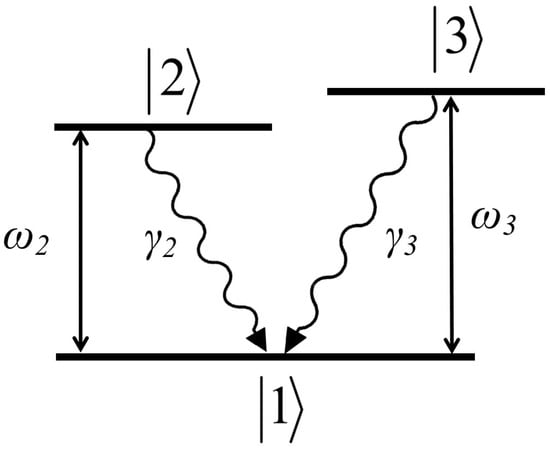
Figure 1
Open AccessArticle
Prediction of Shock Wave Velocity Temporal Evolution Induced by Ms-Ns Combined Pulse Laser Based on Attention-LSTM
by
Jingyi Li, Rongfan Liang, Junjie Liu and Jingdong Sun
Photonics 2025, 12(10), 1040; https://doi.org/10.3390/photonics12101040 - 21 Oct 2025
Abstract
This study systematically examined shock wave velocity induced by millisecond–nanosecond combined-pulse laser (ms–ns CPL) at a fixed ns laser energy density of 6 J/cm2, exploring the effects of varying pulse delays of 0 to 3 ms and ms laser energy densities
[...] Read more.
This study systematically examined shock wave velocity induced by millisecond–nanosecond combined-pulse laser (ms–ns CPL) at a fixed ns laser energy density of 6 J/cm2, exploring the effects of varying pulse delays of 0 to 3 ms and ms laser energy densities of 226.13 J/cm2, 301 J/cm2 and 376.89 J/cm2. The temporal evolution of shock wave velocity induced by varying laser parameters was predicted by an attention mechanism-based long short-term memory algorithm (Attention-LSTM). The dependence between laser parameters and the evolution of shock wave velocity was captured by the LSTM layer. An attention mechanism was utilized to adaptively increase the weights of important time points during the propagation of the shock wave, thereby improving prediction accuracy. The experimental data corresponding to ms laser energy densities of 226.13 J/cm2 and 301 J/cm2 were set as the training set. The ms laser energy density of 376.89 J/cm2 experimental data was set as test set to evaluate the generalization ability of the model under unknown ms laser energy. The results indicate that when ms laser energy density is 376.8 J/cm2, the pulse delay is 2.2 ms. The shock wave velocity induced by the CPL increased by 50.77% compared with that induced by a single ns laser. The proposed Attention-LSTM model effectively predicts the evolutionary characteristics of shock wave velocity. The mean absolute error (MAE), root mean square error (RMSE), mean bias error (MBE) and the correlation coefficient (R2) of the test set are 7.65, 9.01, 1.47 and 0.98, respectively. This study provides a new data-driven approach for predicting the shock wave behavior induced by combined laser parameters and provides valuable guidance for optimizing laser process parameter combinations.
Full article
(This article belongs to the Special Issue Lasers and Complex System Dynamics)
►▼
Show Figures

Figure 1
Open AccessArticle
DMSR: Dynamic Multipath Secure Routing Against Eavesdropping in Space-Ground Integrated Optical Networks
by
Guan Wang and Xingmei Wang
Photonics 2025, 12(10), 1039; https://doi.org/10.3390/photonics12101039 - 21 Oct 2025
Abstract
With the continuous growth of global communication demands, the space-ground integrated optical network (SGION), composed of the satellite optical network (SON) and terrestrial optical network (TON), has gradually become a critical component of global communication systems due to its wide coverage, low latency,
[...] Read more.
With the continuous growth of global communication demands, the space-ground integrated optical network (SGION), composed of the satellite optical network (SON) and terrestrial optical network (TON), has gradually become a critical component of global communication systems due to its wide coverage, low latency, and large bandwidth. However, although the high directivity of laser communication can significantly enhance the security of data transmission, it still carries the risk of being eavesdropped on during the process of service routing. To resist eavesdropping attacks during service transmission in the SGION, this paper proposes a secure routing scheme named dynamic multipath secure routing (DMSR). In DMSR, a metric called the service eavesdropping ratio (SER) is defined to quantify the service leakage severity. The objective of DMSR is to reduce each service’s SER by switching its routing path proactively. To realize DMSR, heuristic algorithms are developed to sequentially search for optimal routing paths for service path switching in the TON and SGION. Finally, simulation results demonstrate that DMSR can achieve trade-offs between secure service transmission and network performance at different levels by adjusting its system parameters. Furthermore, the DMSR scheme significantly reduces the SER compared to the baseline schemes, while introducing acceptable increases in computation overhead and service latency.
Full article
(This article belongs to the Special Issue Advancements and Future Perspectives in All-Optical Detection and Reliability Improvement Technologies)
►▼
Show Figures

Figure 1
Open AccessArticle
A Broad-Temperature-Range Wavelength Tracking System Employing a Thermistor Monitoring Circuit and a Tunable Optical Filter
by
Ju Wang, Manyun Liu, Hao Luo, Xuemin Su, Chuang Ma and Jinlong Yu
Photonics 2025, 12(10), 1038; https://doi.org/10.3390/photonics12101038 - 21 Oct 2025
Abstract
A broad-temperature-range wavelength tracking system employing a thermistor monitoring circuit and a tunable optical filter is proposed and experimentally demonstrated. In this scheme, a thermistor monitoring circuit is utilized to acquire the real-time resistance values of a distributed feedback laser diode (DFB-LD). When
[...] Read more.
A broad-temperature-range wavelength tracking system employing a thermistor monitoring circuit and a tunable optical filter is proposed and experimentally demonstrated. In this scheme, a thermistor monitoring circuit is utilized to acquire the real-time resistance values of a distributed feedback laser diode (DFB-LD). When the mapping relationship curve among thermistor resistance, temperature, and center wavelength of the DFB-LD is established, the drive voltage of the narrowband tunable optical filter is dynamically adjusted to regulate its filter window. Therefore, wavelength tracking is achieved by matching the filter window and the center wavelength of the DFB-LD. The experimental results show that the proposed system can achieve adaptive wavelength tracking within the operation band of 1539.4 nm to 1548.6 nm across a temperature range from −40 °C to 60 °C. The wavelength detection resolution and the minimum step of wavelength control are better than 0.79 pm and 0.1 nm, respectively. By exploiting the conversion characteristics between the thermistor and the center wavelength of the DFB-LD, this approach transforms laser wavelength detection into a low-cost, real-time electrical measurement, significantly enhancing transmission stability and reliability of laser sources in complex thermal environments.
Full article
(This article belongs to the Special Issue Microwave Photonics: Advances and Applications)
►▼
Show Figures

Figure 1
Open AccessArticle
VCSELs: Influence of Design on Performance and Data Transmission over Multi-Mode and Single-Mode Fibers
by
Nikolay N. Ledentsov, Nikolay Ledentsov, Jr., Vitaly A. Shchukin, Alexander N. Ledentsov, Oleg Yu. Makarov, Ilya E. Titkov, Markus Lindemann, Thomas de Adelsburg Ettmayer, Nils C. Gerhardt, Martin R. Hofmann, Xin Chen, Jason E. Hurley, Hao Dong and Ming-Jun Li
Photonics 2025, 12(10), 1037; https://doi.org/10.3390/photonics12101037 - 21 Oct 2025
Abstract
Substantial improvements in the performance of optical interconnects based on multi-mode fibers are required to support emerging single-channel data transmission rates of 200 Gb/s and 400 Gb/s. Future optical components must combine very high modulation bandwidths—supporting signaling at 100 Gbaud and 200 Gbaud—with
[...] Read more.
Substantial improvements in the performance of optical interconnects based on multi-mode fibers are required to support emerging single-channel data transmission rates of 200 Gb/s and 400 Gb/s. Future optical components must combine very high modulation bandwidths—supporting signaling at 100 Gbaud and 200 Gbaud—with reduced spectral width to mitigate chromatic-dispersion-induced pulse broadening and increased brightness to further restrict flux-confining area in multi-mode fibers and thereby increase the effective modal bandwidth (EMB). A particularly promising route to improved performance within standard oxide-confined VCSEL technology is the introduction of multiple isolated or optically coupled oxide-confined apertures, which we refer to collectively as multi-aperture (MA) VCSEL arrays. We show that properly designed MA VCSELs exhibit narrow emission spectra, narrow far-field profiles and extended intrinsic modulation bandwidths, enabling longer-reach data transmission over both multi-mode (MMF) and single-mode fibers (SMF). One approach uses optically isolated apertures with lateral dimensions of approximately 2–3 µm arranged with a pitch of 10–12 µm or less. Such devices demonstrate relaxation oscillation frequencies of around 30 GHz in continuous-wave operation and intrinsic modulation bandwidths approaching 50 GHz. Compared with a conventional single-aperture VCSELs of equivalent oxide-confined area, MA designs can reduce the spectral width (root mean square values < 0.15 nm), lower series resistance (≈50 Ω) and limit junction overheating through more efficient multi-spot heat dissipation at the same total current. As each aperture lases in a single transverse mode, these devices exhibit narrow far-field patterns. In combination with well-defined spacing between emitting spots, they permit tailored restricted launch conditions in MMFs, enhancing effective modal bandwidth. In another MA approach, the apertures are optically coupled such that self-injection locking (SIL) leads to lasing in a single supermode. One may regard one of the supermodes as acting as a master mode controlling the other one. Streak-camera studies reveal post-pulse oscillations in the SIL regime at frequencies up to 100 GHz. MA VCSELs enable a favorable combination of wavelength chirp and chromatic dispersion, extending transmission distances over MMFs beyond those expected for zero-chirp sources and supporting transfer bandwidths up to 60 GHz over kilometer-length SMF links.
Full article
(This article belongs to the Special Issue Vertical-Cavity Surface-Emitting Laser Technology: Innovations and Future Trends)
►▼
Show Figures

Figure 1

Journal Menu
► ▼ Journal Menu-
- Photonics Home
- Aims & Scope
- Editorial Board
- Reviewer Board
- Topical Advisory Panel
- Instructions for Authors
- Special Issues
- Topics
- Sections
- Article Processing Charge
- Indexing & Archiving
- Editor’s Choice Articles
- Most Cited & Viewed
- Journal Statistics
- Journal History
- Journal Awards
- Conferences
- Editorial Office
Journal Browser
► ▼ Journal BrowserHighly Accessed Articles
Latest Books
E-Mail Alert
News
Topics
Topic in
Energies, Photonics, Sustainability, Solar, Nanomaterials
Photovoltaic Materials and Devices—2nd Edition
Topic Editors: Bin Yang, Yongbo YuanDeadline: 31 December 2025
Topic in
Energies, Entropy, Photonics, Technologies, Optics, Solar
Advances in Solar Technologies, Second Edition
Topic Editors: Jayanta Deb Mondol, Annamaria Buonomano, Biplab DasDeadline: 31 March 2026
Topic in
Electronics, IoT, Photonics, Sensors, Energies, Optics
Quantum Wireless Sensing
Topic Editors: Deepak Mishra, Chao Cai, Jie ZhangDeadline: 30 April 2026
Topic in
Nanomaterials, Polymers, Photonics, Nanomanufacturing, Crystals, Applied Sciences, Optics
Nanomaterials for Photonics and Optoelectronics: Practical Applications and Advances
Topic Editors: Luciana R. P. Kassab, Raul Rangel-Rojo, Rafael Salas-MontielDeadline: 31 May 2026

Conferences
Special Issues
Special Issue in
Photonics
Laser Surface Processing: From Fundamentals to Applications
Guest Editor: P.J. Bryanston-CrossDeadline: 27 October 2025
Special Issue in
Photonics
Digital Holography and 3D Imaging Technologies
Guest Editors: Qiang Li, Zi Wang, Huan DengDeadline: 30 October 2025
Special Issue in
Photonics
Editorial Board Members’ Collection Series: Optical Wireless Communication
Guest Editors: Jianyang Shi, Junwen ZhangDeadline: 30 October 2025
Special Issue in
Photonics
Advances in Polymer Optical Fiber Sensors: Materials, Designs and Applications
Guest Editor: Xuehao HuDeadline: 30 October 2025










